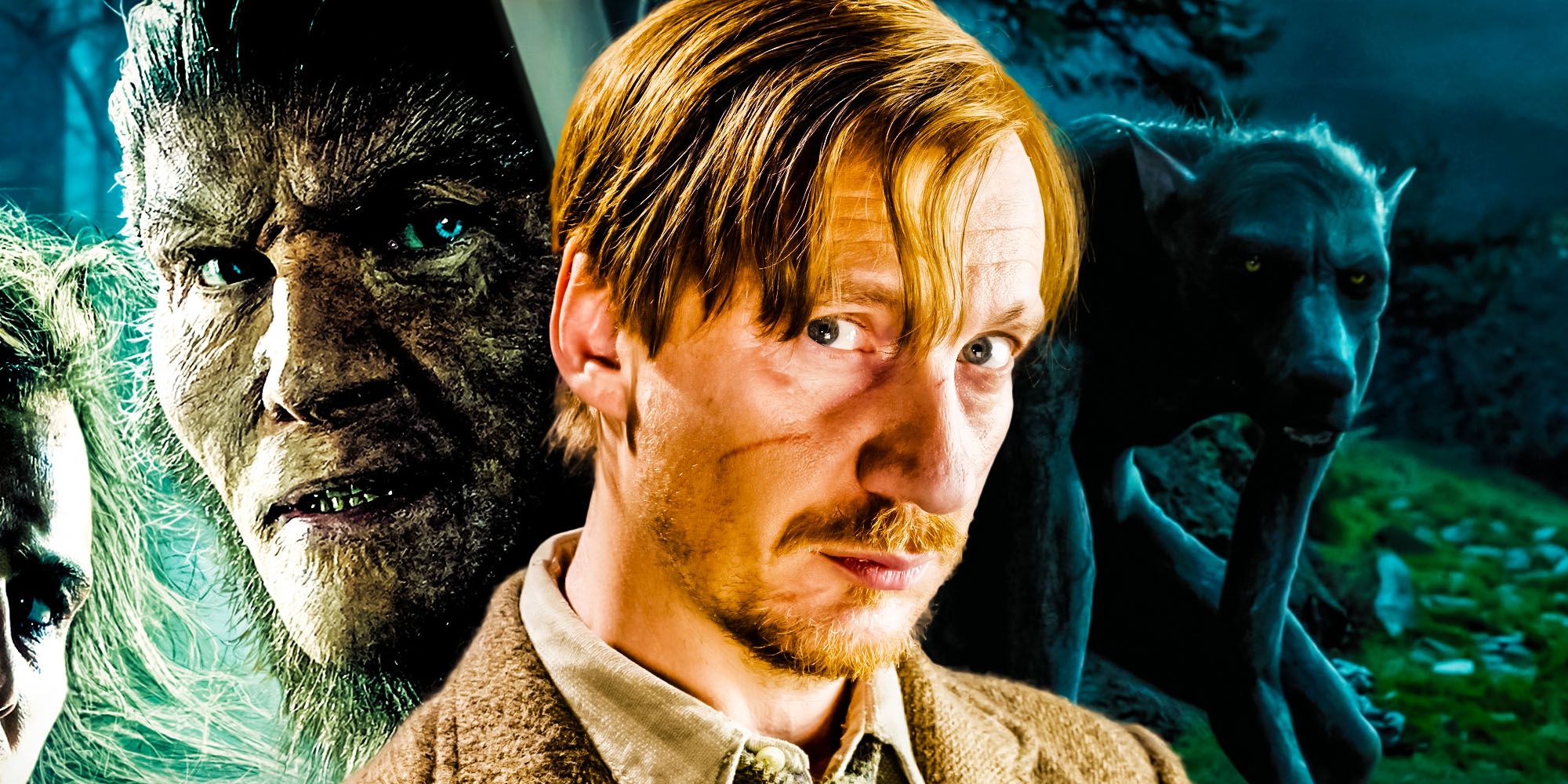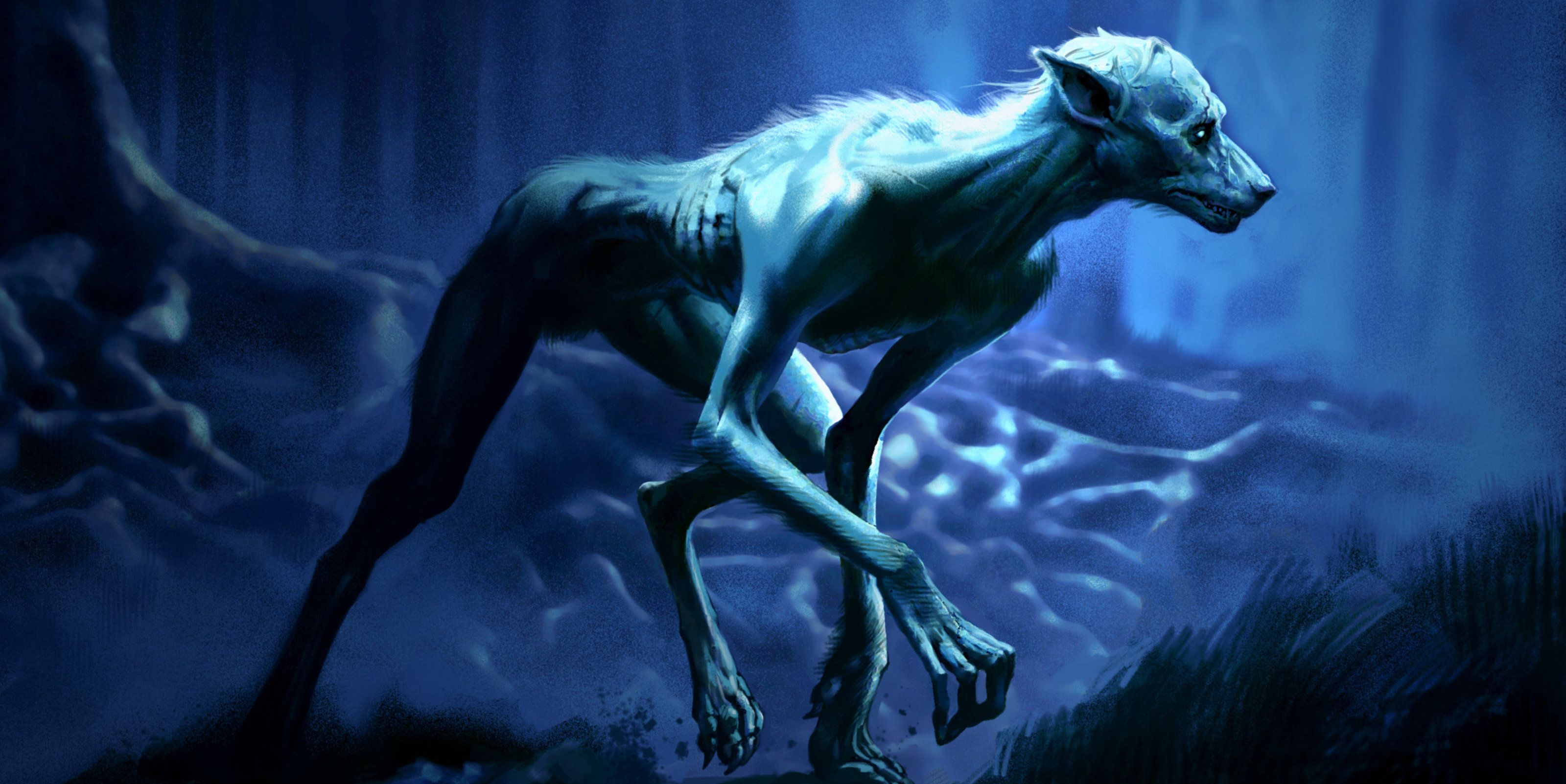In the Harry Potter universe, Remus Lupin (David Thewlis) and Fenrir Greyback (Dave Legeno) look very different as werewolves - here's why. J.K. Rowling's take on the European folklore concept that has existed for at least a millennium brings great depth to it, as it shows multiple sides of lycanthropy. Lupin and Greyback stand on opposite sides of the spectrum, and their wolf forms are a means to visualize just how different they are as people, as well as the nature of their relationships to their own afflictions.
Fenrir Greyback was a notorious Death Eater with a sadistic interest in attacking children and a personal goal to turn as many witches and wizards into werewolves. In 1965, he was arrested by the Ministry of Magic on suspicion of killing two Muggle children. None other than Lyall Lupin, Remus' father, vouched for Greyback to be imprisoned, and insulted werewolves, saying they're "soulless, evil, deserving nothing but death." Greyback responded to Lyall's bigotry by attacking his four-year-old son. Remus' family had to live with this tragedy, keeping their son isolated for his (and everyone else's) safety. Remus lived a poor, itinerant life until James Potter took him under his wing. When the Potters died, Remus went back to a lonely, miserable life, unable to hold a job for more than a few months (or until people figured out his condition). When Voldemort (Ralph Fiennes) rose to power again, Dumbledore (Michael Gambon) recruited Lupin once more and offered him a better life at Hogwarts and with the Order of Phoenix.
While Harry Potter's Remus Lupin hated his lycanthropy, Fenrir Greyback fully embraced it, earning a beast-like appearance as a human, too. He enjoyed hurting people so much that he didn't even need a full moon to let his wolf side loose. Very disturbingly, Voldemort promised Greyback "sons and daughters" in exchange for catching wizards for him. Greyback was a cannibalistic child-killer whose werewolf form was huge, muscular, and covered in fur, much like the usual werewolf description in classic folklore. When Remus turns into a werewolf in The Prisoner of Azkaban, Harry, Ron, and Hermione encounter a hairless, emaciated wolf. This proves that Remus has been suppressing his inner wolf all his life, hating every bit of his affliction and living in constant fear that he will kill someone when out of his right mind.
According to J.K. Rowling, "Everything wolfish disgusts [Lupin]", which is why he hides his wolf-shaped Patronus charm throughout the Harry Potter saga, despite being the one to teach Harry how to conjure the powerful spell. Because of Greyback, Remus had to face constant stigma, living a destitute, runaway life away from his family, for fear of hurting them. His sickly wolf form shows exactly how much Remus hated being a werewolf, and how much he hated Greyback, who destroyed his and his family's lives. Greyback's full-fledged monster wolf (and his wolf-like human form) show a remorseless villain who let lycanthropy take control of his whole person.
Rowling commented that "Lupin’s condition of lycanthropy was a metaphor for those illnesses that carry a stigma, like HIV and AIDS." David Thewlis, who arguably plays the Coens' best villain in Fargo, does an excellent job at portraying a conflicted, at times self-hating, yet ever-kind character. Remus Lupin became the first werewolf to receive the Order of Merlin (posthumously) for his brave actions against Voldemort, thus helping lift the strong stigma surrounding werewolves. Lupin's unusual wolf form in Harry Potter shows that this affliction can be contained and that it doesn't have to define the person affected by it.


